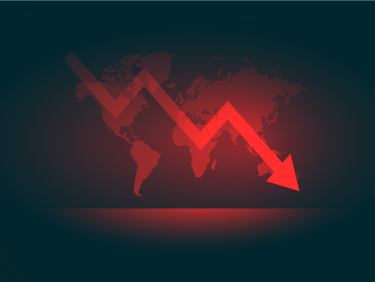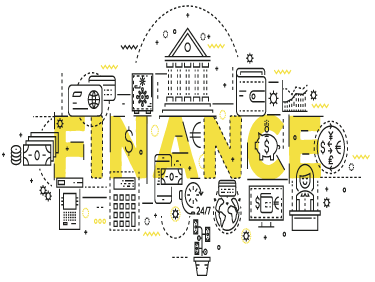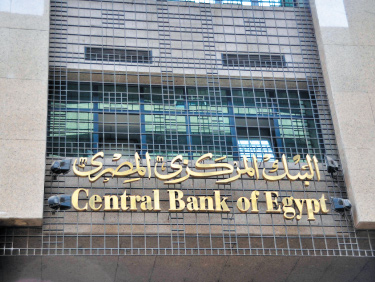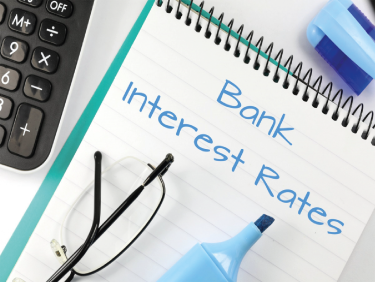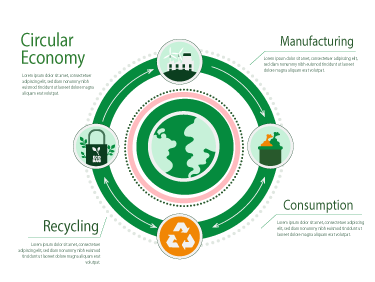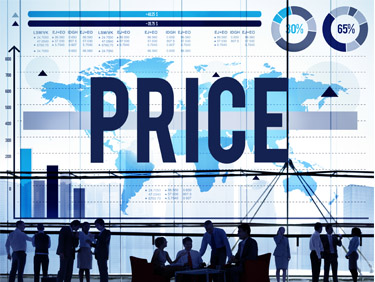-
We perceive microfinance as a major growth driver despite responsible financing regulations, while leasing lags on delayed private investment recovery
-
Strong deal pipeline and synergies with affiliated commercial banks offset lagging stock market activity, in our view
-
We increase our 12-month TP for EFG Hermes by c27% to EGP20.5/share and for CI Capital by c14% to EGP6.25/share; we maintain our OW ratings on EFG Hermes and CI Capital
We expect solid microfinance 2022–26e performance, while accounting for responsible financing regulations enforcement: Egypt’s microfinance loans increased c40% y-o-y in 2021 to EGP27.1bn, with the number of beneficiaries increasing c10% y-o-y to 3.49m individuals taking the penetration rate to 7.7%, on our calculations, from 7.1% a year earlier. The average ticket per beneficiary increased c27% y-o-y in 2021 to EGP7,748. Going forward, we expect microfinance loans to grow at a 2022–26e CAGR of c17%, well below its 2018–21 CAGR of c32%, supported by higher financial inclusion and rising inflation. We expect inflation to average 9.0% over 2022–23e, up from 5.2% in 2021, weakening the household’s purchasing power and increasing the demand for microfinance loans. On a different front, Egypt’s Financial Regulatory Authority (FRA) and the Central Bank of Egypt (CBE) recently introduced the Responsible Financing Law, which requires microfinance firms to report a sustainable rate for pricing their products. The sustainable rate formula sums up administrative expenses, loan write-off rate, the cost of external funds, the tax expense, and the required return by the microfinance company, all as a percentage of the average outstanding loan portfolio and divided by 1 minus loan write-off rate. The companies have six months to comply with the law, which became effective on 8 February. According to the law, charges and fees paid by beneficiaries should not exceed 5% of the loan’s value for micro borrowers and 1.5% for small and medium borrowers. We expect the new regulations to lead to a reshuffling in recording revenue items between interest earned, fees, and commissions. On our numbers, the all-in earned rate on EFG Hermes’ Tanmeyah’s average loan portfolios should decline from 48.5% in 2021 to 38.0% in 2026e, and for CI Capital’s Reefy should decline from 47.2% in 2021 to 38.6% in 2026e. We expect both firms to grow their loan books at a 2022–26e CAGR of c21%, increasing Tanmeyah’s market share from c14% in 2021, on our numbers, to c16% in 2026e and increasing Reefy’s market share from c6% in 2021 to c7% in 2026e. Tanmeyah’s 2021 net profit increased 2.16x y-o-y to EGP493m, c71% higher than our initial estimate of EGP288m, due to higher-than-expected fee income and lower-than-expected provisioning charges. As provisioning normalizes over our forecast period, we expect a 2022–26e net profit CAGR of c17%, implying an upward revision of c75%, on average, over our forecast period. Reefy’s 2021 net profit increased c60% y-o-y to EGP200m, c21% above our initial estimate of EGP166m on higher-than-expected loan growth. Going forward, we expect a 2022–26e net profit CAGR of c22%, implying an upward revision of c21% on average over our forecast period.
Subdued private sector participation weighs on leasing growth, and higher competition leads to lower NIMs: Even though private investments increased c41% y-o-y in 1H21 to EGP103bn, constituting c25% of total investments, it remains significantly below its pre-floatation FY14/15–FY15/16 levels where it constituted an average of 57% of total investments. In USD terms, private investments declined at a CAGR of c15% over FY15/16–FY20/21 to USD12.7bn. In 2021, the total value of leasing contracts increased c36% y-o-y to EGP79.8bn following the increase in private investments helped by lower interest rates; however, they remain subdued, in our view. Moreover, higher competition and the low-interest-rate environment led to a decline in NIMs from an average of 5.0% in 2020 to 3.5% in 2021 for companies under our coverage. Going forward, we expect leasing contracts to increase at a CAGR of c25% over our forecast period following our expected rebound in private investments. We also expect upward pressure on interest rates to support NIMs growth. EFG Leasing’s net leased portfolio increased c14% y-o-y in 2021 to EGP5.46bn, mostly in line with our initial estimate of EGP5.51bn. NIMs came in at 3.0% in 2021, on our calculations, lower than our initial estimate of 4.6%. Net profit increased c83% y-o-y to EGP101m, c44% above our earlier estimate of EGP70.3m, on lower-than-expected provisioning. We expect EFG Leasing to grow its net leased portfolio at a CAGR of c23% over our forecast period, with an average NIM of 3.4%, leading to a net profit CAGR of c20%, implying an average upward bottom line revision of c20%. CI Capital’s Corplease net leased portfolio remained unchanged y-o-y in 2021 at EGP8.44bn, after adjusting for securitizations in both years, c23% below our estimate of EGP10.9bn. NIMs came in at 4.0% in 2021, on our calculations, lower than our initial estimate of 5.0%. Despite muted portfolio growth and declining NIMs, Corplease’s net profit increased c5% y-o-y to EGP434m, c15% above our earlier estimate of EGP378m, due to some EGP35.6m in provision reversals compared to our expected provision expenses of EGP73m. We expect the company to grow its net leased portfolio at a CAGR of c26% over our forecast period, with an average NIM of 3.8%, leading to a net profit CAGR of c19%, hence, implying an average downward bottom line revision of c8%.
Strong market positioning coupled with a healthy advisory pipeline and existing synergies drive IB growth, in our view: Egypt’s stock market turnover increased c31% y-o-y in 2021 to EGP665bn (excluding deals), representing c87% of market capitalization from c72%, a year earlier. The turnover was mainly led by retail trades, which increased c43% y-o-y to represent c74% of total turnover, while institutional trades increased by only c4% y-o-y to constitute c26% of total turnover. With EFG Hermes’ and CI Capital’s focus on institutional trading, the two firms saw their market shares decrease to c17% in 2021 for EFG Hermes from c21% a year earlier, and to c6% for CI Capital from c8% a year earlier, on our calculation. EFG Hermes’ exposure to rebounding regional and frontier markets, and a strong Egypt market positioning reflected in increasing its brokerage revenue by c34% y-o-y in 2021 to EGP1.34bn, backed by its Egypt and regional operations, but missing our earlier estimate of EGP1.54bn by c13%. CI Capital’s brokerage revenue increased c9% y-o-y in 2021 to EGP212m, missing our earlier estimate of EGP253m by c16%. EFG Hermes’ asset management revenue increased c28% y-o-y to EGP528m, backed by local and regional operations, c55% above our initial estimate of EGP341m. CI Capital’s asset management revenue increased c66% y-o-y to EGP54.8m, however, came c13% below our estimate of EGP63m. Both firms enjoyed a strong advisory pipeline leading to a 2.08x y-o-y increase in EFG Hermes advisory fees to EGP494m, c78% above our earlier estimate of EGP278m. For CI Capital, advisory and merchant banking fees increased 10.1x y-o-y to EGP268m (of which we estimate some EGP150m as gain on the sale of Taaleem Management Services (TALM EY) shares). We expect EFG Hermes’ IB net profit to increase at a 2022–26e CAGR of c24%, implying an average upward revision of c30%, and CI Capital’s IB net profit to increase at 2022–26e CAGR of c29%, implying an average downward revision of c23%. Overall we like EFG Hermes’ exposure to regional markets and the resulting USD exposure. We believe that possible synergies with Banque Misr in terms of increasing AUMs and rapidly growing advisory business to represent an upside to our numbers for CI Capital.
EFG Hermes is developing into a universal bank with the acquisition of a 51% stake in AIB, while CI Capital acquired a c16% stake in Cleopatra Hospitals: EFG Hermes completed the acquisition of a 51.0% stake in Arab Investment Bank (AIB) at EGP2.55bn through a capital increase, which implies a 2022e P/B of 0.92x, on our numbers. Concurrently, the Sovereign Fund of Egypt (TSFE) also acquired a 25.0% stake in the bank through a capital increase. After the acquisition, the bank’s paid-in capital increased to EGP5.0bn reaching the CBE’s minimum capital requirement and achieving adequate capitalization to allow loan book expansion. The bank’s loan-to-deposit ratio reached c29% as of December 2021. We expect the bank to grow its loan book at a 2022–26e CAGR of c25% taking its L/D to c49% by 2026. We expect an average 2022–26e NIMs of 4.3%, up from an estimate of 3.1% in 2021 and we expect its ROE to increase from an estimate of 9.24% in 2021 to 16.3% by 2026e. We believe the acquisition will help the firm increase its ROE, cross-sell its different corporate and retail products and smooth its earnings volatility. We note that in February First Abu Dhabi Bank (FAB UH) submitted a non-binding offer to Egypt’s Financial Regulatory Authority (FRA) to acquire a minimum 51% stake in EFG Hermes Holding at an indicative all-cash offer price of EGP19.0/share implying a total company value of EGP18.5bn, c7% below our TP of EGP20.5/share. FAB later withdrew the offer due to global market uncertainty and volatile economic conditions. The initial offer had put the firm on a 2022e P/B and a P/E of 1.22x (adjusted for cash) and 15.7x, respectively, on our numbers. On a different front, CI Capital acquired a stake in Cleopatra Hospitals (CLHO EY) through its merchant banking operations, capitalizing on the growth potential of the healthcare sector. CI Capital and Banque Misr own MCI Capital Healthcare Partners with a 60:40 ownership split. MCI Capital acquired 26.8% stake in Cleopatra Hospitals at EGP2.09bn, implying a 2022e P/E of 15.4x. On our calculations, the company took EGP1.6bn in debt to finance the acquisition.
We increase our 12-month TP for EFG Hermes by c27% to EGP20.5/share and for CI Capital by c14% to EGP6.25/share on a mix of rolling valuations for one year, accounting for equity investments, and earnings revision. We maintain our Overweight recommendations on both stocks: We value both companies using a Sum-Of-The-Part (SOTP) valuation methodology using an excess return model for their core operations and adding excess cash and financial investments. For CI Capital, we value Taaleem using a DCF methodology. For both firms we use a cost of equity applying our forecast for 12-month T-bill yields leading to an average cost of equity of 16.9%. For EFG Hermes investment bank, our base assumption for the cost of equity is a weighted average of Egypt and the MENA region based on geographical revenue contribution leading to an average cost of equity of 12.6%. Individually, we value EFG Leasing at EGP1.08/share (c46% higher than our previous estimate) and CI Capital’s Corplease at EGP2.49/ share (c3% higher than our previous estimate) putting the businesses at a 2022e P/E multiple of 9.13x and 7.63x, respectively. For the microfinance, we value EFG’s Tanmeyah at EGP4.58/share (c66% higher than our previous estimate) and CI Capital’s Reefy at EGP1.56/share (c36% higher than our previous estimate), putting the businesses at a 2022e P/E multiples of 7.63x and 7.93x, respectively. For the investment banks, we value EFG Hermes at EGP7.69/share (c49% higher than our previous estimate) and CI Capital at EGP0.85/share (c6% below our previous estimate). For EFG Hermes, we then add the company’s excess cash position, and investment property valued at around EGP4.0bn, or EGP4.19/share (c42% lower than our previous estimate due to cash deployed to the acquisition of AIB). We value the company’s stake in AIB at EGP2.84bn, or EGP2.92/EFG Hermes share, implying a 2022e P/B multiple of 1.06x. For CI Capital, we value Taaleem at EGP0.74/CI Capital share (almost unchanged from our previous estimate) putting the business at 2022e EV/EBITDA of 12.6x. We value CI Capital’s 16% stake in Cleopatra Hospitals using the average 1Q22 market price of EGP4.79/share deducting the debt portion that we estimate at EGP960m, yielding a value of EGP0.27/share. For EFG Hermes, the NBFS platform makes up c28% of the stock’s total value, the investment bank c38%, with cash and AIB stake accounting for the remaining c35%. This sum up to a 12-month target price of EGP20.5/share, which yields a potential return of c36% on the 18 April closing price of EGP15.0/share. We therefore maintain our Overweight rating on EFG Hermes Holding. For CI Capital, the NBFS platform makes up c65% of the stock’s total equity value, the investment bank c14%, with Taaleem and equity investments accounting for the remaining c22%. This sums up to a 12-month target price of EGP6.25/share, which yields a potential return of c75% on the 18 April closing price of EGP3.58/share. We therefore maintain our Overweight rating on CI Capital. For EFG Hermes, our 12-month TP of EGP20.5/share puts the stock at a 2022e P/E multiple of 12.8x and a P/B multiple of 1.33x, while it is trading at 2022e P/E and P/B of 12.4x and 0.88x, respectively. For CI Capital, our 12-month TP of EGP6.25/share puts the stock at a 2022e P/E multiple of 9.79x and a P/B multiple of 1.65x, while it is trading at 2022e P/E and P/B multiples of 5.60x and 0.94x, respectively.

